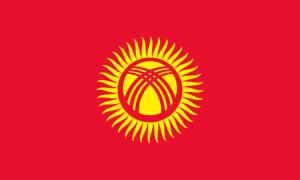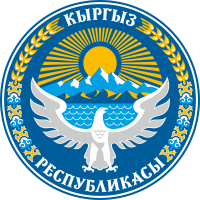KYRGYZSTAN
TOUR KYRGYZSTAN
Kyrgyzstan, a fabulous Central Asian country, is very popular with tourists and still shows great tourism potential. It has a long and eventful history and boasts a number of unique heritage sites dating from various times, including the era of the Silk Roadcaravan tracks, which once ran though its today’s territory; and it is of course a country of fascinating natural sites, a grandiose mountain kingdom often referred to as “Central Asian Switzerland”. The Tien Shan system of mountain ranges covers 80% of its area, featuring the extremely high mountains Pobeda Peak (7,439m), Lenin Peak (7,134m) and Khan-Tengri Peak (6,995m). Lovers of mountaineering, trekking, downhill skiing, snowboarding and other adventure tourism activities regard Kyrgyzstan as one of the world’s best vacation destinations.
Kyrgyzstan’s Issyk-Kul Lake, the world’s second largest mountain lake (after Titicaca in the Andes), makes the country a wonderful beach resort destination as well. Issyk-Kul’s turquoise waters, wonderful beaches, numerous recreation and health centers and spas are always a guarantee of a perfect summer vacation.
Bishkek and Osh, the major cities of the country, are also worth visiting. They are different in many aspects but both have something a tourist will certainly enjoy.
Since recently jayloo tourism has been rapidly growing in Kyrgyzstan. (The Kyrgyz for jayloo is “a summer alpine pasture”.) It is a new type of ecotourism involving visits to remote mountain grazing areas, with stays in the local shepherds’ yurts. (A yurt is a strong circular domed dwelling structure made of skins or felt stretched over a collapsible lattice framework and used by the nomadic peoples of Asia.)
Once in Kyrgyzstan, tourists also enjoy the intrinsic hospitality of the local people, exotic Kyrgyz cuisine and most interesting local traditions carefully preserved and practiced.
General Information
Geography
Kyrgyzstan is a landlocked country in the northeast of the former Soviet Central Asia. It borders China, Kazakhstan, Tajikistan and Uzbekistan. Most of the territory is covered with the Tien Shan mountain ranges. The country’s highest mountain is Pobeda Peak (7,439m; “Victory Peak” in Russian; Kyrgyz: Jengish Chokusu); the lowest parts lie at an altitude of about 400 meters. The area is 199,900 square kilometers – five times as large as Switzerland.
Population
The country’s population is a little over 5.6 million. Since life is hard in the mountains, most of the people live in the valleys. The largest ethnic group are Kyrgyz. They make up 72% of the population (2013 estimate) and are spread throughout the country. The largest ethnic minorities are Uzbeks (14.5%) concentrated in the south and Russians (9.0%) living mainly in the north. There are also Dungans (1.9%), Uighurs (1.1%), Tajiks (1.1%), Kazakhs (0.7%), Ukrainians (0.5%) and other smaller ethnic minorities, including Germans.
Government
Kyrgyzstan is a parliamentary republic. The parliament, Jogorku Kengesh (“Supreme Council’), is unicameral, with 120 seats elected by popular vote for five-year terms. The president is elected by popular vote for only one six-year term.
Administrative Divisions
The country has seven provinces (Batken, Jalal-Abad, Issyk-Kul, Naryn, Osh, Talas, and Chuy), two cities each equal to a province (Bishkek and Osh) and 40 districts in the provinces. There are 22 cities and 429 rural administrative offices.The capital and the largest city is Bishkek, formerly known as Pishpek and Frunze, with a population of 874,400.
Languages
The official languages are Kyrgyz and Russian. Uzbek and Tajik are also widely spoken. Russian is used as the lingua franca. There are about 30,000 second-language English speakers in the country.
Currency
The currency used in Kyrgyzstan is the som (KGS). One som has 100 tyiyns. Banks and currency exchange offices are available in all the cities. One US dollar is equal to about 48 soms (2013 rate).


